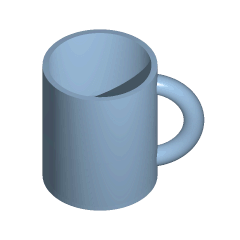Student Homotopy Seminar
Spring 2021
Ohio State University
$\Huge {E_{p,q}^{2}=H_p(Y,H_q(F))\Rightarrow H_{p+q}(X)}$
| Activity | Time | Info |
|---|---|---|
| Homotopy Chat | Weekly, Th:11:30AM–12:30PM | Speakers take precedence over chatting |
| Speakers | Th:11:30AM–12:30PM | Guests or seminar members |
Location: On Zoom. Email Matt Carr to be put on the seminar email list.
| Date | Speaker | Topic |
|---|---|---|
| Th: 1/14 | Jens Kjaer | It is a classical result that the rational homotopy groups, $\pi_*(X)\otimes \mathbb{Q}$, as a Lie-algebra can be computed in terms of indecomposable elements of the rational cochains on $X$. This result can also be recovered from applying Goodwillie calculus to rational homotopy theory. A different simplification of the homotopy theory, is $v_h$-periodic homotopy theory. For $h=1$ we are able to compute the $K$-theory based $v_1$-periodic Goodwillie spectral sequence in terms of derived indecomposables. This allows us to compute $v_1^{-1}\pi_*SU(d)$ in a very different way from the original computation by Davis. |
| Th: 1/21 | Daniel Fuentes-Keuthan | Goodwillie Towers of infinity categories and Desuspension We reconceptualize the process of forming $n$-excisive approximations to $\infty$-categories, in the sense of Heuts, as inverting the suspension functor lifted to $A_n$-cogroup objects. We characterize $n$-excisive $\infty$-categories as those $\infty$-categories in which $A_n$-cogroup objects admit desuspensions. Applying this result to pointed spaces we reprove a theorem of Klein-Schwänzl-Vogt: every $2$-connected cogroup-like $A_\infty$-space admits a desuspension. |
| Th: 1/28 | Chat | |
| Th: 2/4 | Chat | |
| Th: 2/11 | Niall Taggart | Toward a multivariable Goodwillie calculus The operad structure on the derivatives of the identity functor on spaces has been one of the most significant Goodwillie calculus results. One would hope for this result to extend to more cases than just spaces. For example, it would be nice to have a $G$-operad structure on the identity functor on $G$--spaces or a “motivic” operad structure on the identity functor on motivic spaces. In this talk, I will survey why these dreams of operad structures in the equivariant and motivic settings are unrealistic within the current versions of Goodwillie calculus and give a glimpse at one approach to fixing this. > |
| F*: 2/19 | Sarah Yeakel | Isovariant Homotopy Theory |
| Th: 2/25 | Chat | |
| Th: 3/4 | Peter Bonventre | Rigidification of Dendroidal Infinity-Operads Quasicategories are a model for "categories up to coherent homotopy", where composition is only defined up to a contractible choice. There are two ways to rigidify this structure: the homotopy category, which outputs a plain old category, and the W-construction, which outputs a simplicially enriched category. These functors are the left adjoints to the "nerve" and "homotopy coherent nerve" functors, the latter of which, while more opaque, has the advantage of being an equivalence of homotopy theories.In this talk, I will give an explicit description of both of these adjoints, starting with the work of Dugger-Spivak in the categorical setting, and building to a reformulation and a generalization to the operadic setting, following joint work with Luis Pereira. |
| Th: 3/11 | Chat | |
| Th: 3/18 | Chat | |
| Th: 3/25 | Chat | |
| Th: 4/1 | Chat | |
| Th: 4/8 | Chat | |
| Th: 4/15 | Chat | |
| We*: 4/21 | Jonathan Beardsley | Three Equivalent Notions of Orientation for Thom Spectra I'll review the framework for highly structured Thom spectra and orientations thereof developed by Ando, Blumberg, Gepner, Hopkins and Rezk. Using this framework (and as little technical $\infty$-category theory as possible) I will then describe three ways in which one might equip a Thom spectrum with an "orientation," and how they are all equivalent. This result is well-known to experts, but does not seem to be written down. Finally, if there is time, I will describe ongoing work in understanding such generalized Thom spectra from the point of view noncommutative spectral algebraic geometry. Much of this work is joint with Rune Haugseng. |
| Th: 4/29 | Chat |
* denotes an unusual time or date
This page maintained by Matt Carr
Previous organizers: Duncan Clark, Michael Horst
Last modified 01/09/2021
